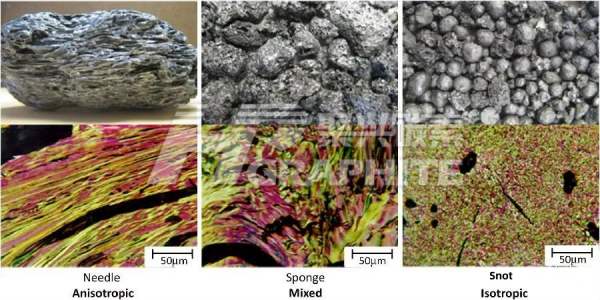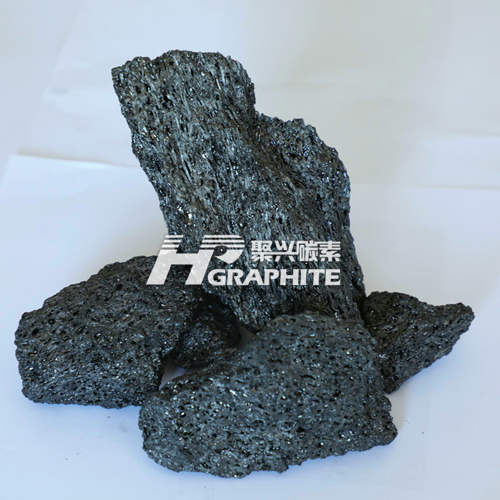Problems in the development of needle coke industry

Problems in the development of needle coke industry
(1) Whether needle coke industry is a high energy consumption industry is not clear, and policy support is insufficient
In February this year, the National Development and Reform Commission, the Ministry of Industry and Information Technology, the Ministry of Ecology and Environment and other five departments jointly released the Implementation Guidelines for Upgrading Energy Conservation and Carbon Reduction in Key Fields of High Energy Consuming Industries (2022 Edition), in which the Implementation Guidelines for Upgrading Energy Conservation and Carbon Reduction in the Oil Refining Industry proposed that "By 2025, In the refining sector, the proportion of capacity above the benchmark level of energy efficiency shall reach 30%, and the withdrawal of capacity below the benchmark level shall be accelerated ". Most needle coke projects in China belong to the follow-up extension of petroleum refining and coal tar processing. When the government administration determines the high energy consumption industry, needle coke projects are usually included. Therefore, in the actual management process, limiting production and eliminating backward energy-saving and emission reduction measures will hinder the development of needle coke industry.
(2) Blindly mounted and low-level repetition
The needle coke industry in China has formed a certain scale, but it is still in the early stage of industry development. Inevitably, there are blind and disorderly development, low-level duplication, low price competition and other phenomena and trends, in particular, many oil refining enterprises and coal coking enterprises have incorporated needle coke projects into their plans in order to successfully obtain the approval of new projects, but they have all adopted traditional backward technologies, resulting in a rapid rise in new backward capacity.

Therefore, although the nominal production capacity of needle coke in China is sufficient to meet domestic demand, high-end needle coke products still need to be imported due to backward technology. If these needle coke enterprises do not improve their technical level and product quality, they are likely to follow the old path of blind expansion at a low level - low price competition - loss in the whole industry - stagnation and regression in development in the future.
(3) Serious upstream and downstream barriers and lack of integration of the whole industry chain
Since 2006, China has been the second largest oil refining country after the United States. By 2020, China's crude oil processing capacity has reached 891 million tons. China is the largest coal tar producer, with the coal tar output of about 25.1 million tons in 2019. These production capacities provide raw materials for needle coke production in China. China is also the world's largest steel producer and lithium ion battery producer, which makes it the largest needle coke consumer market.

Needle coke is a high-end carbon material with strict requirements on raw materials. Many raw materials cannot be used to produce needle coke. The production process and model of lithium ion battery have customized requirements for anode materials, and the anode materials have different requirements for needle coke. Downstream users of needle coke usually purchase from designated needle coke manufacturers, and they still need a long trial period. Therefore, from needle coke raw materials to graphite electrodes and lithium ion battery anode materials, downstream products of the entire industry chain have strict standards and customization requirements for upstream products, and there are inter industry barriers such as technical confidentiality and entry barriers between manufacturers.
(4) Lack of enterprise innovation ability
There are obvious structural problems in China's needle coke industry. Although China's needle coke capacity and output can meet downstream demand, and the capacity and output are expanding, in fact, high-end needle coke used for graphite electrode nipples and high capacity power battery anode materials for electric vehicles still rely on imports. At the same time, there is overcapacity and low price competition in the middle and low-end product market. Some enterprises used to be engaged in coal, coking, oil refining, steel and other industries, but they still kept the conventional thinking of traditional industries into needle coke industry, ignored scientific and technological innovation, and did not have R&D capabilities and sustainable development capabilities.
(5) There are still problems of industrial energy consumption and pollution
Needle coke production is actually an extension of heavy petroleum refining. The first two sets of needle coke units in China, such as Jinzhou Petrochemical Company and Shanghai Baosteel Company, were both modified on the basis of the delayed coke unit used for refining heavy petroleum. Therefore, in the production process of these needle coke units, there are still problems of pollution emissions and high energy consumption. In particular, as the delayed coking process of needle coke production belongs to semi continuous production, manual operation is still required on site when coke is discharged, and the upper and lower covers of the coke tower are opened directly, resulting in low automation of the entire production process, poor working environment, and large amounts of carbon dioxide and volatile organic compounds VOCs are discharged into the atmosphere unorganized; The raw coke of primary products is dehydrated, dried, broken and transferred in the open coke tank, and the problems of coke powder and sewage are still prominent. These problems of energy conservation and environmental protection have a negative impact on the green and sustainable development of needle coke industry, which should be paid enough attention. Needle coke price and market analysis, welcome to contact us.
No related results found








0 Replies